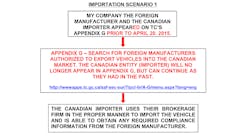It’s time to discuss the R-word. The R-word is the economic equivalent of those other “letter defined” words that you cannot say. That’s because talking about the R-word is unpleasant, distasteful, and is not suitable for speculation in esteemed economic circles.
That being said, it’s beginning to feel a little R-wordy. I say feel because you can’t really see an R-word coming, and neither can you hear it. It invades the economy like a bad cold virus. It does its work in secret, much below the radar, until it becomes burdensome to everyone.
When R-words occur, everyone is so surprised. How could this have happened? Why didn’t anyone see this coming? But you seldom do. R-words actually begin months before they are discovered. They are similar to cheating lovers suddenly being revealed. Again, there is much shock, outrage, and despair when an R-word is uncovered.
So, R-words are only felt, sensed, and detected by intuition before their arrival, and it feels very R-wordy right now. Q1 GDP is currently estimated at only 0.2%. It is expected this number will be revised downward due to lower export sales and other factors. Therefore, Q1 should end up in slightly negative territory. Because the technical definition of the R-word is two consecutive quarters of negative growth, if Q2 GDP is negative, we have an R-word. Provided Q2 is only slightly negative and growth resumes in Q3, it would be one of the weakest R-words on record.
If this is the bottom of the economic cycle and the economy began growing again, this would be a good thing. However, there is a psychological element to R-words, and headlines such as “U.S. Economy Goes into (R-word)” could cause disruptions in consumer spending and the stock market.
Some economists claim weak Q1 GDP was a result of bad weather and the West Coast Port strike. These had an impact but not as much as you might think. The biggest impact of the weather was in the Northeast and it did not impact manufacturing much, unlike last year’s Polar Vortex. In addition, economic data from the period during the strike show that the effect was limited in duration. Other data suggest the economy had already started to slow down at the beginning of the year and these additional factors hastened its decent.
Therefore, Q2 economic growth becomes critical. How’s it looking? In a word, tenuous. Current data on Retail and Wholesale Sales, Factory and Durable Goods Orders, Wholesale Inventories, Export Sales Growth, and Import Prices are all flashing red. (To see the graphs and detailed explanation, click on the link at the end of this blog.) Of course there are other sources, The Conference Board Leading Economic Index for one, that indicate there will be no R-word this year. This is not an unusual occurrence, it remains a strange economic environment, and some indicators have been inconsistent or unreliable since the Great Recession (word is permissible in the past tense only).
To try to figure this out, I called economist Pat. I believe economist Pat is a brilliant economist because he and I almost always agree on almost everything. I remember calling economist Pat in December of 2007 because I was feeling R-wordy, and he said he was feeling it also – and that time we turned out to be correct.
So what does economist Pat say? He believes Q2 GDP will come in between 1-2% positive. Not a great quarter, but not that close to an R-word.
The Economic Cycle Research Institute’s (ECRI) Weekly Leading Growth Index also says no R-word. It crossed into negative territory last October, bottomed out between January and March, but now, due to solid growth since then, is well in positive territory.
So now I do feel much better, but I still don’t feel that great ……


